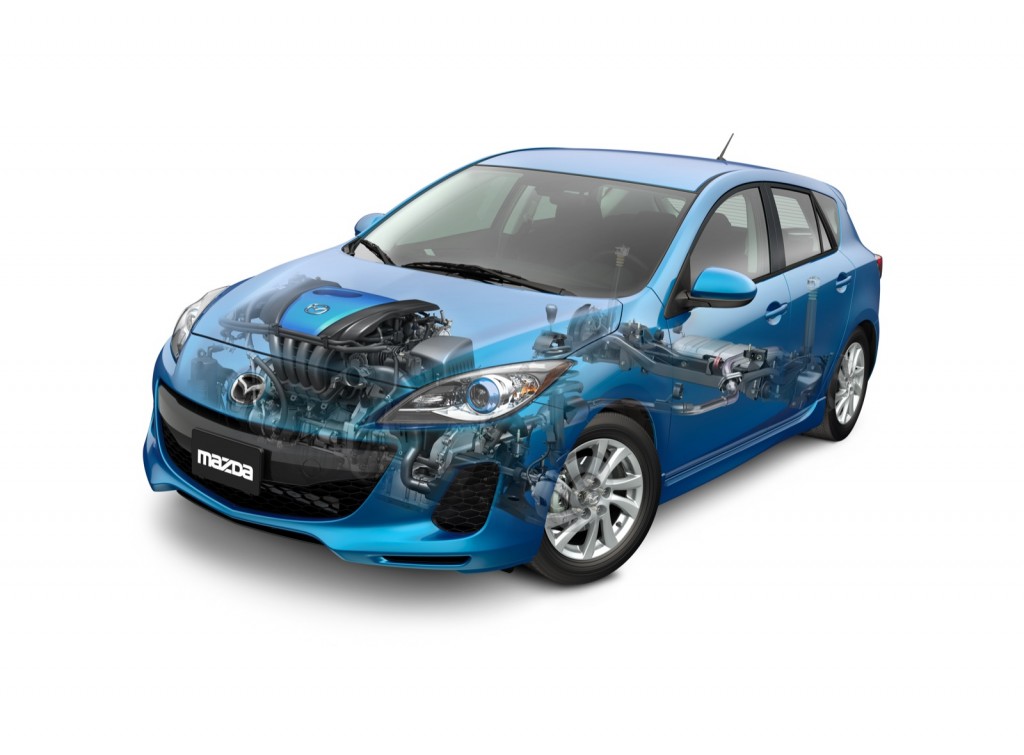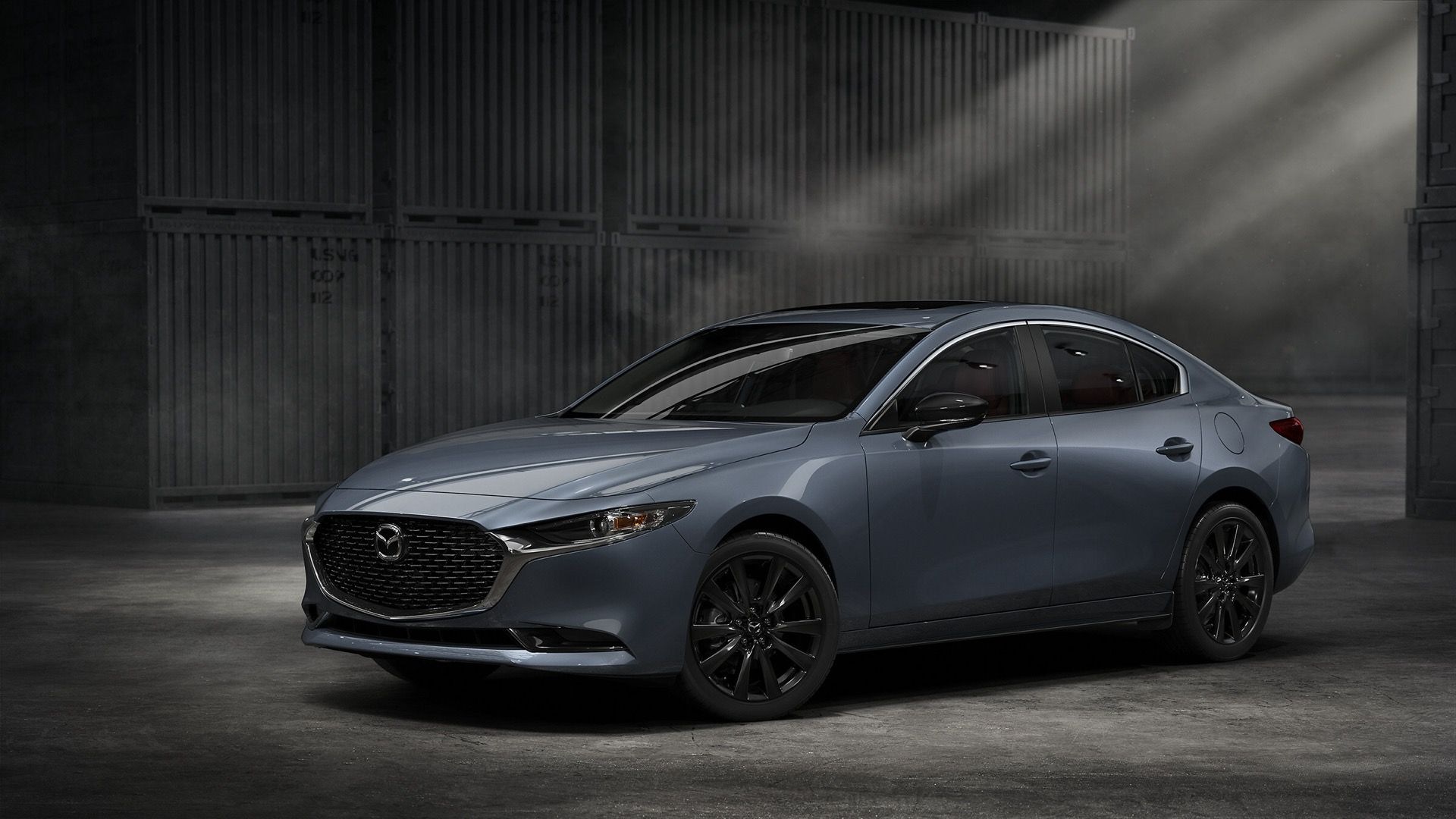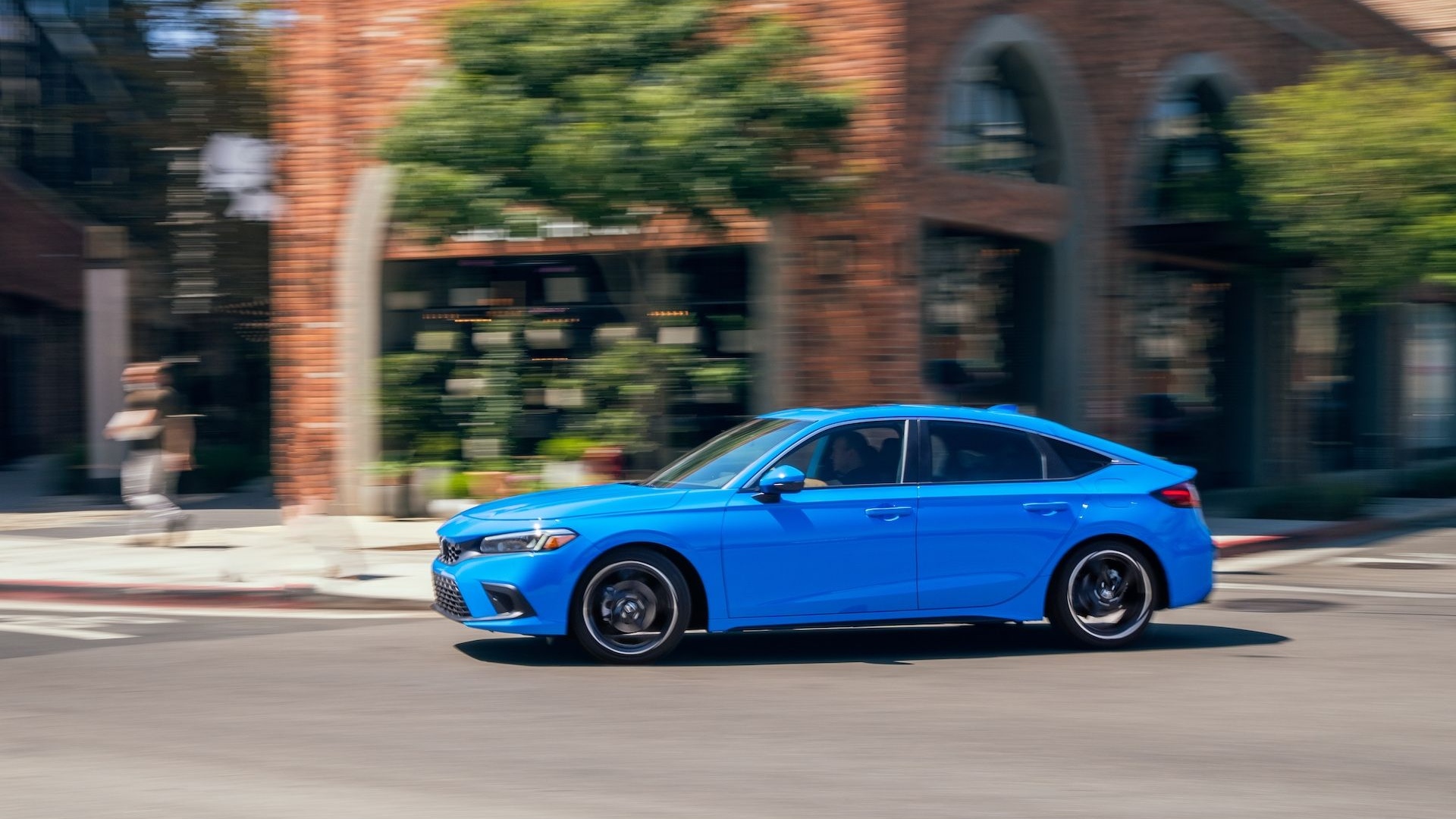
2012 Mazda3 SkyActiv 2.0
Mazda has long been known for emphasizing engineering, being a little quirky, and emphasizing driving enjoyment across all its products in a way we don't see from bigger automakers—for instance, as the only major auto manufacturer to have championed the rotary engine over the long term.
Through its SkyActiv initiative, which covers all aspects of vehicle design and engineering, Mazda is aiming for a 30-percent improvement in fuel economy across its fleet by 2015, compared to 2008 levels.
Mazda today is just a niche player in the world automotive market, selling about 1.2 million vehicles annually, split over about 130 markets; but it hopes to expand sales by more than 40 percent, to 1.7 million, within the next several years.
"The internal combustion engine still has to be utilized as a core technology over the next decade," said executive officer Kiyoshi Fujiwara. But he added that to achieve those goals Mazda plans to "radically evolve base technologies."
Lighter, lower-compression diesel

2012 Mazda MAZDA3 with SkyActiv
Many years ago the theory was that for diesels, the higher the compression ratio, the better. But Mazda's gone straight against that philosophy with its new Sky-D diesel engine, which will go on sale later this year in the 2012 Mazda3, as well as the upcoming Mazda CX-5. At 14 to 1, it has the lowest compression ratio of any current passenger-car diesel engine, and while, for decades, we've been hearing that higher is better for diesel compression ratios, Mazda makes a strong argument otherwise.
Simply put, the much lower compression ratio of the new Sky-D engine allowed engineers to more precisely control exactly where and when combustion took place; it also makes combustion smoother and better distributed, with less of that diesel 'ping' and clatter that gets worse as compression ratios rise and actual combustion is less controlled.
By lowering compression and making combustion more controlled, Mazda has managed to improve both low-end torque and high-rev power. In a test-mule Euro-spec Mazda6 equipped with the 2.2-liter Sky-D engine, we noted that it felt not only more eager to rev than the 2.2-liter diesel of the same spec that it will be replacing in some markets, but also quicker with throttle response; that's in part because altogether, considering the lighter block, crank, and connecting rods especially, the automaker has cut more than ten percent off the engine's overall weight.
The Sky-D is also innovative in that it uses a variable valve lift system to open wider when cold and allow some exhaust backflow to help speed warmup. Then through a two-stage turbo the engine can produce up to 170 horsepower and 310 pound-feet.
Higher compression on the gasoline side—but 87-octane-friendly
On the other hand, Mazda has dramatically raised the compression ratio for its next-generation Sky-G gasoline engine—to a whopping 14 to 1. That's the highest of any mainstream passenger vehicle.
The change provides a 15-percent increase in torque overall, especially in the most economical driving range—as well as a 15-percent reduction in emissions—with a net fuel efficiency that's 'actually quite close to that of the current 2.2-liter diesel.
But Mazda is up against a few typical obstacles: Usually, it causes a shortage of low-rpm torque; and there's knocking. To help lower cylinder temperatures, Mazda employed six-hole direct injectors, a longer exhaust manifold design, and a cylinder design aimed at reducing cooling loss and pumping losses. Overall, friction is down 30 percent, too. And somehow, with some optimization of the combustion process and a reduction in U.S. versions of the compression ratio to 13 to 1, Mazda has made the engine perform at its peak on 87-octane American gasoline.

2012 Mazda3 SkyActiv 2.0
The new Sky-G engine isn't at all related to Mazda's current MZR engine, but it does share a common, open-deck architecture with the Sky-D diesel. The two engines do use quite different materials, tough, and the Sky-G no longer shares common pieces with the engines used in any Ford vehicles. Mazda has designed its own electronically controlled variable valve timing system, which replaces the Ford-related engine-oil-driven system in the current engine.
Designed to stack with other future technologies
Over the long term, Mazda is ready to combine the Sky-D (perhaps in several sizes) and Sky-G with other incremental technologies like engine start-stop systems (Mazda's i-Stop), hybrid-style regenerative braking systems that capture excess energy during stop-and-go driving, and eventually, full hybrid technology throughout its lineup. All this should put the automaker at a significant advantage in meeting the announced EPA fuel-economy target of 54.5 mpg by 2025.



